- Bernard Preston homepage
- Harvesting Rainwater
- Eco homes
Eco-friendly homes
Eco-friendly homes are coming into vogue for those with a green persuasion.
Whether it is because folk are seriously interested in saving the planet for their grandchildren, or simply to keep up with the neighbours, it makes no difference; an investment in an environmentally-friendly house and garden makes good economic sense. These ten beehives produced 700 pounds of honey this year, for example.
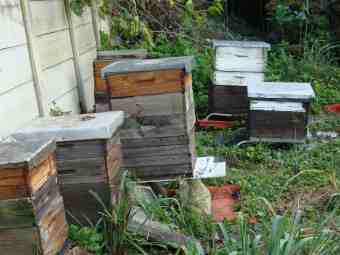
This page was last updated by Bernard Preston on 9th February, 2023.
Then of course with the prices of utilities soaring for the homeowner in most parts of the world, investing in green-technology makes a lot of sense.
Utility companies will often score off residential properties.
For example in Spain the price of non-residential electricity is quite low at 107 euros per megawatt-hour, but more than double that for homeowners.
In South Africa Eskom is planning to raise the price of electricity by 20 percent for each of the next three-years to recover losses from the corruption and inefficiency during the Zuma presidency.
All of this makes an investment in a green home more attractive.
With the price of water in cities such as Cape Town set to rise dramatically next year, that is assuming there is any to be had, an investment in harvesting and storing the rain doubly makes sense; post-chlorination and plastic microparticle issues come into the equation too.
So what are these issues to look out for when purchasing or building eco-friendly homes?
Orientation is vitally important; our north facing home captures all the light and warmth from the low-slung sun in the winter.
Avoid houses facing east or west. They are hot in summer and cold in winter.
A mix of solar-panels facing not only north, but also east and west is a good idea; one needs more power early and late in the day.
Insulation
Keeping the heat out in summer, and warmth in during the winter months makes a huge difference to both the comfort and cost of running an eco-friendly home.
In a brick under-tile home, one is thinking of a hundred or more years, so recycled polystyrene is a good option. It is indestructible by termites. Those sheets would go under the concrete floor, in the cavity between the masonry walls and as a ceiling board; and as a thermal blanket in the roof.
Our first house was a brick under-tile structure, without insulation. Our daughter lives there now with her family; we have added on the gardeners' cottage, as we are calling it, with all the tips we learned from the eco-friendly homes in the Netherlands. The difference in temperature control is truly astonishing, and not at great cost.
In homes with a shorter expected lifespan, paper recycled into sheets is perhaps a better option.
A polyester-blanket made from recycled plastic bottles above the ceiling also makes a huge difference.
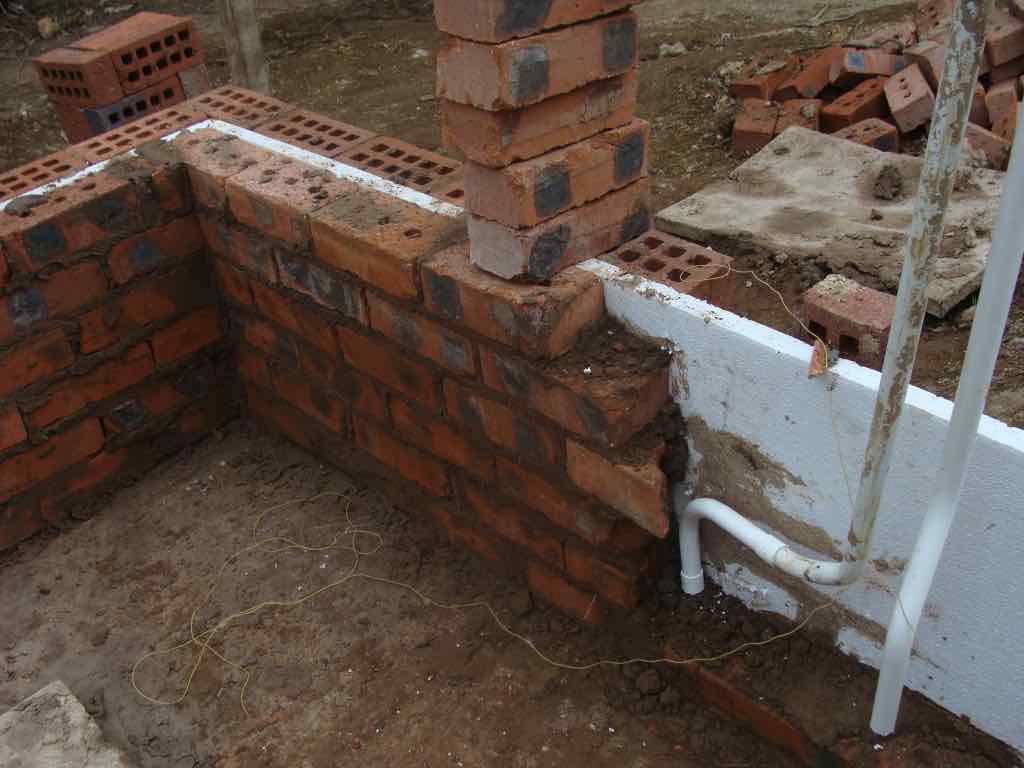
Large windows with double-glazing will let light and warmth in during the winter months, if the home is correctly faced towards the sun.
In the summer with the sun overhead, less direct-heat penetrates those windows.
This obviates or at least reduces the need for underfloor heating and air-conditioning.
If you are seriously interested in an environmentally friendly house, and live in KZN, South Africa then think of contacting Ecobuilders.
Energy
This is Bernard Preston's home with solar vacuum tubes on the right heating a hot water geyser; and part of the 10 kW of PV-panels supplying electricity.
Solar power energy is a must for eco-friendly homes.
We have just done an upgrade, adding another 5kW of panels, facing east and west, and two lithium-ion batteries. We were making plans to go off the grid though much debate continues; prepaid electricity turns out to be a better option. You pay only for what you use, albeit at a higher rate.
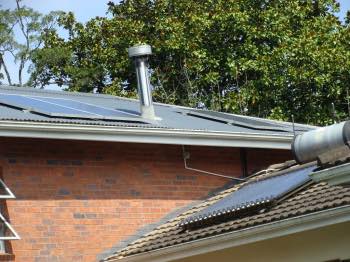
- Heating of water requires nearly a half of the energy used in many homes. Solar vacuum-tubes can reduce this electrical or gas cost to almost zero.
- Solar PV panels can by harvesting sunshine provide the total electrical needs for a home. Then you have the option of having a bank of batteries which is grid-tied or a prepaid meter; or neither.
- The chimney of the little wood-stove seen above is used primarily for heating in winter.
"We do not have to pay for wind and sun; the feed-stock will come for free."
- Michael Power
Energy storage
Do not use lead cell, but go straight for lithium-ion or Redflow batteries; there will be new types arriving regularly. They are guaranteed for ten years and the specifications are far superior.
As a rule of thumb, estate agents are saying that any investment in solar will add double the amount to the value of a home; it is certainly cost-effective.
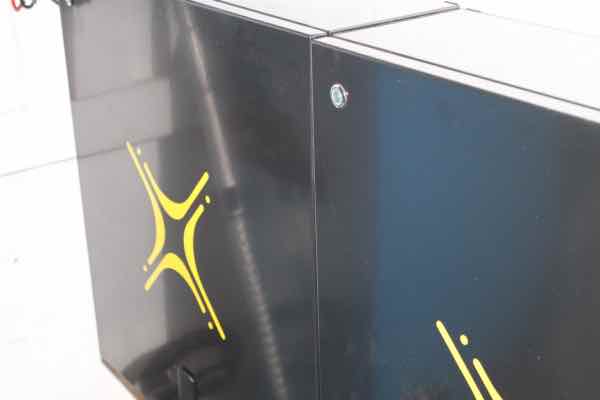
Harvesting rainwater
Harvesting rainwater has become a major issue for eco-friendly homes, with many cities around the world in serious trouble. Whether it is climate change, or simply bad management of the existing infrastructure, we need to become resilient in the face of these difficulties.
Poor planning for the future both by city fathers but also by the ordinary man in the street is leading to great pain.
The bath vs shower debate might interest you.
Storing that rain in tanks above the ground is a poor option; they are unsightly, expensive and the water is too warm in summer.
Better still is an underground-reservoir which works out cheaper in the long run, and we can easily store far more water.
That water is icy-cold reducing the proliferation of any bacteria that might get into the reservoir from the roof, where birds' droppings can be a problem. Mostly the heat of the iron or tiles takes care of the bugs, and we personally have had no problems with drinking it.
Officially rainwater is not potable without filtration and sterilization.
There is an amazing synergy of green living; this pump that delivers rainwater to our home and garden is entirely energised by solar power.
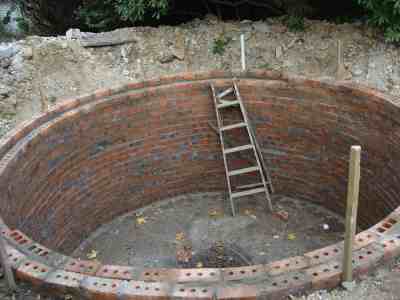
Solar-powered gate motor
With sensitive charging equipment, vulnerable to both lightening strikes and utility surges, a solar powered gate motor should be a feature of eco-friendly homes.
This 431 volt surge from the utility did massive damage down our street. We did consider going off the grid; instead we chose a prepaid electricity meter.
The utility breaker is only switched on very occasionally during prolonged misty weather giving protection most of the time against surges.
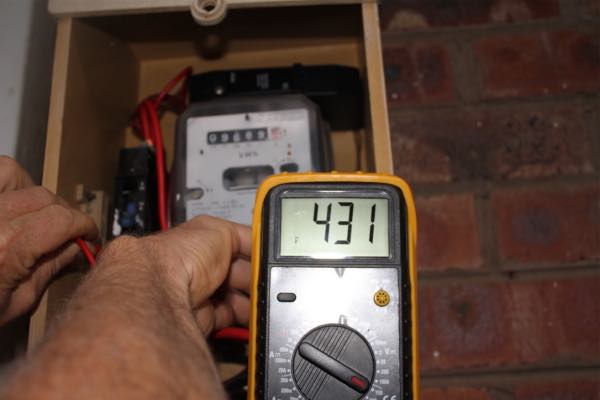
Depending on the amount of traffic, I actually recommend two 25W PV-panels at 90 degrees, one to collect early morning sunshine and the other for the afternoon. A battery of at least 35Ah is desirable; a good second-hand one from an electric golf cart can often be bought for a song.
I have both a sealed battery, and one which must be filled with distilled-water periodically; both seem equally good.
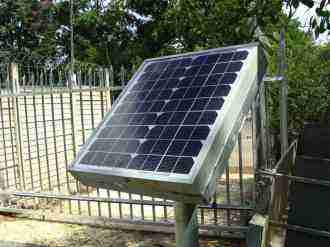
This single 10W PV panel we found was inadequate during inclement weather.
Read more about how to make your own solar gate motor eco-friendly.
When browsing use right click and "Open Link in New Tab" or you may get a bad gateway signal.
Newsletter
Our newsletter is entitled "create a cyan zone" at your home, preserving both yourself and Mother Earth for future generations; and the family too, of course. We promise not to spam you with daily emails promoting various products. You may get an occasional nudge to buy one of my books.
Here are the back issues.
- Lifestyle and ideal body weight
- What are ultra-processed foods?
- Investing in long-term health
- Diseases from plastic exposure
- Intensive lifestyle management for obesity has limited value
- A world largely devoid of Parkinson's Disease
- The impact of friendly bacteria in the tum on the prevention of cancer
- There's a hole in the bucket
- Everyone is talking about weight loss drugs
- Pull the sweet tooth
- If you suffer from heartburn plant a susu
- Refined maize meal and stunting
- Should agriculture and industry get priority for water and electricity?
- Nature is calling
- Mill your own flour
- Bake your own sourdough bread
- Microplastics from our water
- Alternative types of water storage
- Wear your clothes out
- Comfort foods
- Create a bee-friendly environment
- Go to bed slightly hungry
- Keep bees
- Blue zone folk are religious
- Reduce plastic waste
- Family is important
- What can go in compost?
- Grow broad beans for longevity
- Harvest and store sunshine
- Blue zone exercise
- Harvest and store your rainwater
- Create a cyan zone at your home
E-car
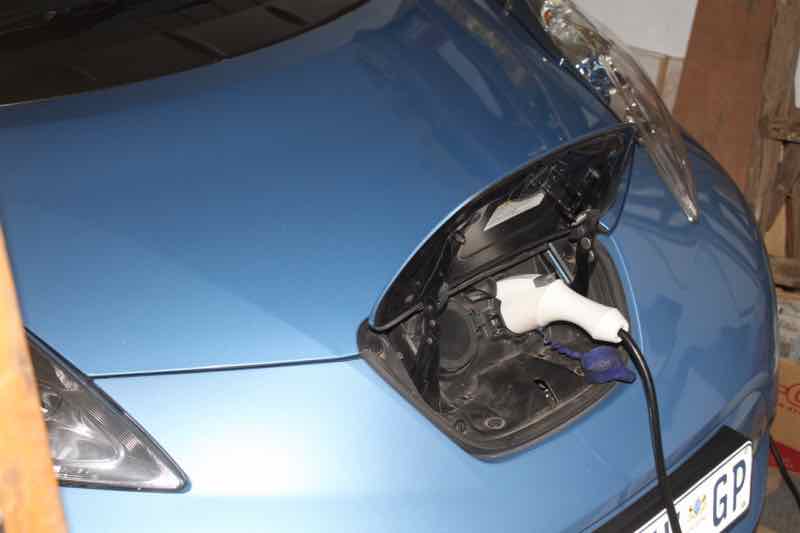
And then of course eco-friendly homes really want to have an electric car parked in the garage. Our elderly Nissan Leaf draws 10 amps, about the same as a kettle, on charge. It takes seven hours so a cost of about R14 if the battery is nearly flat, or for free if you have a solar generator. That will take you about 150km.
Going green is often thought to be a luxury but you certainly will get your capital back. Important though that is, it is small beer in comparison with the sheer pleasure of being insulated from the vagaries of utility companies; and with playing one small part to help save the planet from global warming too.
Eco-friendly homes
Eco-friendly homes are becoming a much sought-after acquisition, making investment in solar and rainwater harvesting more attractive. Since the damage done by the power surge shown above, we are again revisiting the issue of going off the grid.
One could and should consider other items such as compost heaps, a vegetable garden and even a worm farm for kitchen waste; these can be added later at minimal cost.
Establishing organic fruit trees takes rather longer; purchasing a home with flourishing lemon and avocado saplings would be a big plus.
Five boxes to separate paper, plastic and glass waste is not difficult; can and tetrapak too.
Heating and cooling
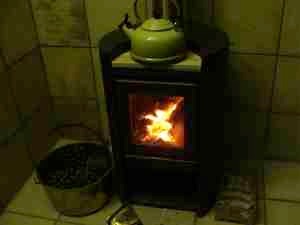
Cooling during the day is no problem in eco-friendly homes, but heating at night certainly is.
With surplus electricity being produced by solar generators during the day when it is hot, running an air-conditioning unit can certainly be considered environmentally friendly.
Compromise with heating at night, using either electricity from a utility power station, or a small woodstove; both contribute to greenhouse gases. Should one have to chop down trees specifically for the latter, that would swing matters in favour of the power station.
Where there is surplus timber, then the woodstove heating system would make more sense.
Here is a tree in our garden, blown down in a massive wind storm. After the chainsaw, I will use a hydraulic splitter to produce suitably sized logs.
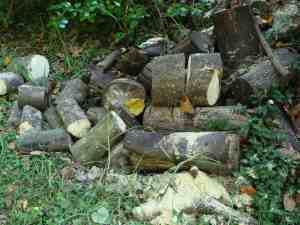
A compost heap
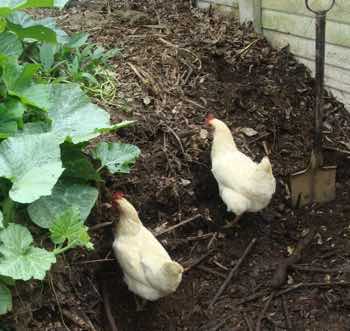
Every eco-friendly home must have a compost heap. In a compact house it might be in a neat and tidy box, but in the larger garden it will probably be rather messy.
Compost heaps deal with the apple cores and potato peels from your kitchen, attract earthworms, contribute to reducing greenhouse gases and make organic food a real possibility.
Real humus means your vegetables will take off like these butternut are doing.

The beta-carotene alone in this perfect butternut smoothie[2] for breakfast makes it all so worthwhile; it splits into two vitamin A molecules giving protection against diabetes and blindness.
- Using food as medicine.

Did you find this page interesting? How about forwarding it to a friendly book or food junkie? Better still, a social media tick would help.
- Bernard Preston homepage
- Harvesting Rainwater
- Eco homes
Address:
56 Groenekloof Rd,
Hilton, KZN
South Africa
Website:
https://www.bernard-preston.com